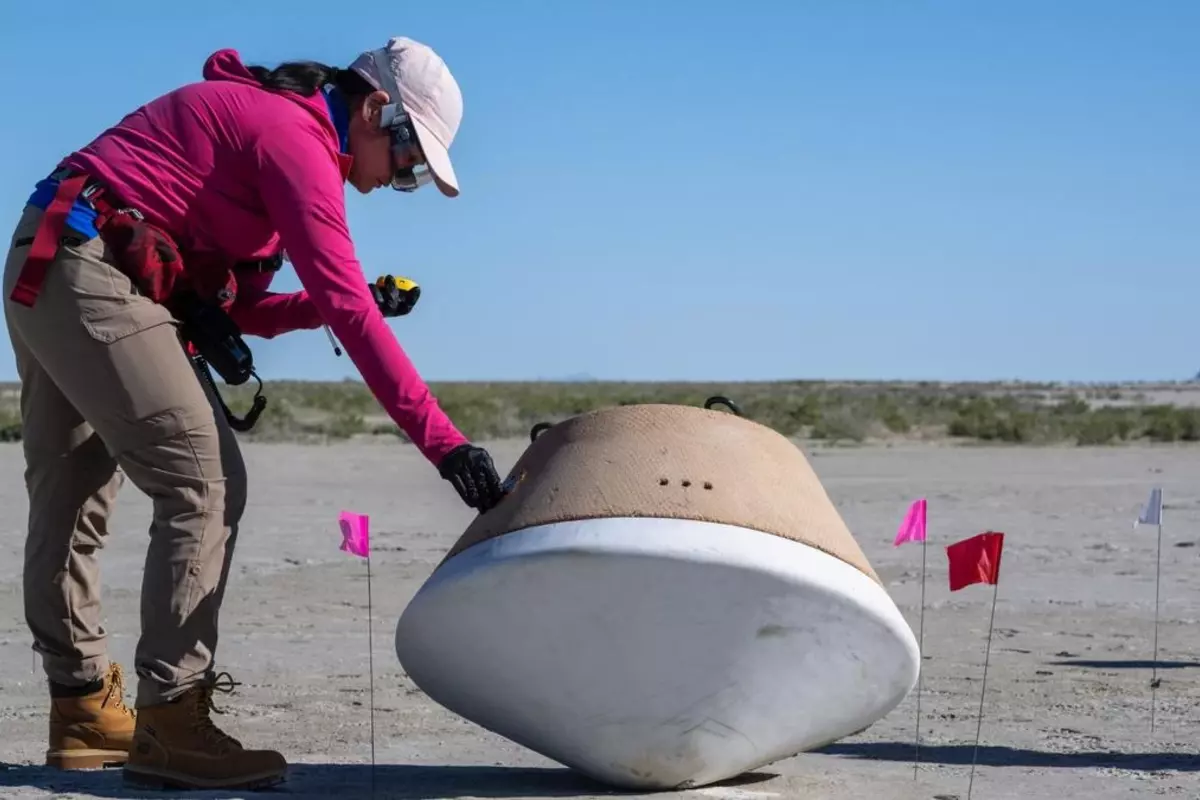
The robotic spacecraft OSIRIS-REx dropped a gumdrop-shaped capsule hours earlier as the mothership passed within 108,000 kilometres (67,000 miles) of Earth. The capsule landed in a selected landing zone on the huge Utah Test and Training Range of the US military, west of Salt Lake City.
On Monday, the samples will be flown to a brand-new facility at the Houston-based Johnson Space Centre for NASA. Nearly 400kg (842lbs) of moon rocks that the Apollo astronauts collected more than 50 years ago are already housed in the structure.
Until the container is opened, scientists can only guess how much debris from the carbon-rich asteroid known as Bennu is contained inside.
The only other nation to return samples from an asteroid was Japan, which collected around a teaspoon from two asteroid trips.
Dante Lauretta of the University of Arizona, the mission’s principal investigator, will go to Texas with the samples. Given the ambiguity surrounding the contents, he said before landing that the container’s opening in Houston in a day or two would be “the real moment of truth.”
Also read: UN Must Make Reforms To Stay Relevant In Modern World, Issue Cannot Remain “Indefinite”: Jaishankar
The sample for OSIRIS-REx was taken from the tiny asteroid Bennu three years ago. Bennu was founded in 1999. The space rock is categorised as a “near-Earth object” since it orbits our planet every six years, passing relatively close to it. The likelihood of an impact is regarded as remote.
It is thought that Bennu is made out of a loose cluster of boulders, much like a mound of rubble. It is smaller than the Chicxulub asteroid, which struck Earth around 66 million years ago and wiped off the dinosaurs, with a diameter of 500 metres (1,600 feet), making it somewhat wider than the Empire State Building is tall.
Bennu is an artefact of the early solar system, like other asteroids. Its chemistry and mineralogy are essentially intact from when it formed 4.5 billion years ago, therefore it provides important hints about the formation and evolution of rocky planets like Earth.
Even organic compounds required for the development of microorganisms are possible to find there.
Two organic compounds were discovered in samples from Ryugu, another near-Earth asteroid, that were brought back three years ago by the Japanese mission Hayabusa2. This finding supports the idea that celestial bodies like comets, asteroids, and meteorites that bombarded early Earth seeded the young planet with the primordial ingredients for life.
Launched in September 2016, OSIRIS-REx arrived at Bennu in 2018, spent nearly two years orbiting the asteroid, and on October 20, 2020, it will approach close enough to collect a sample of the loose surface material using a robot arm.
Also read: UN Must Make Reforms To Stay Relevant In Modern World, Issue Cannot Remain “Indefinite”: Jaishankar
In May 2021, the spacecraft blasted off from Bennu on a 1.9 billion kilometre (1.2 billion mile) journey that included two rounds of the sun.
About 13 minutes before landing, the capsule slammed into the upper atmosphere at 35 times the speed of sound. The capsule blazed brightly as it descended to Earth, and temperatures inside were predicted to exceed 2,800 degrees Celsius (5,000 degrees Fahrenheit).
Near the end of its descent, parachutes opened, slowing the capsule to around 17 kph (11 mph) before it gently touched down on the northwest Utah desert floor.
In order to rescue the capsule and ensure that the integrity of the container and inner canister containing the asteroid material was maintained through re-entry and landing, a recovery team of scientists and technicians was waiting. The sample was to be kept pure and uncontaminated by anything from Earth.
To read more such news, download Bharat Express news apps





















